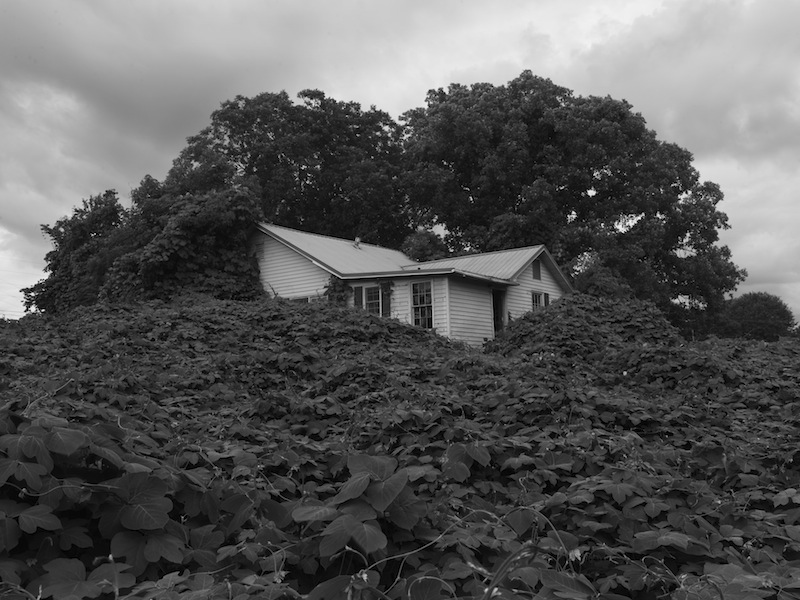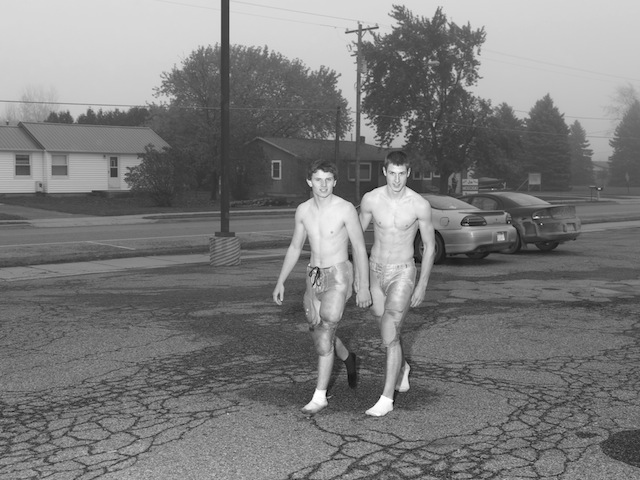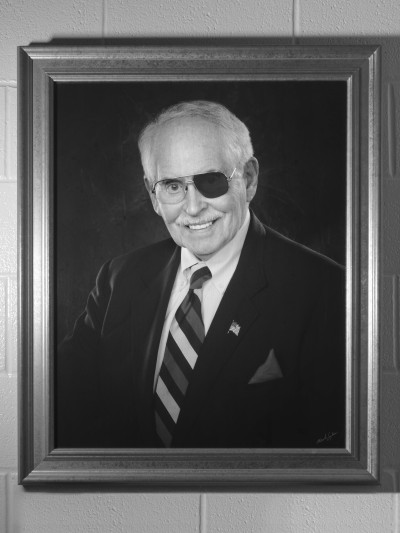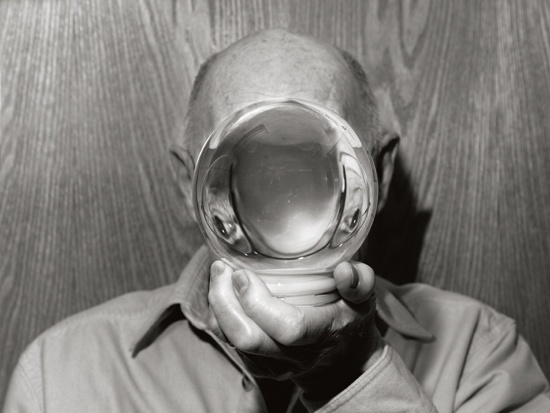
Two shirtless gladiators approach, posturing in unison as they prepare to square off against some unseen foe. But their innocuous demeanor upsets this illusion of antiquity, revealing something more familiar. The subjects in the image, Cade and Cody. Au Gres, Michigan (2012), by photographer Alec Soth, are actually two teenage boys wearing nothing but padded football pants and dirty socks. They saunter across a cracked asphalt parking lot with self-conscious adolescent gait.
The nature of this image is unmistakable, but when viewed alongside the other works in Soth’s Songbook at Fraenkel Gallery, cultural allusions emerge and inhabit the photographs. Taken together, the works in the exhibit seem to represent the fragments of a down-home, Americana epic.
The work in this series arose from Soth’s collaboration with writer Brad Zellar on The LBM Dispatch, a roving community newspaper documenting life across the United States. Songbook is nonetheless a separate body of work and the stories behind the images are mostly erased. Unanchored from journalism, these photographs are free to illustrate any number of stories, and they conspire with one another to construct entirely new narratives.

The series even features a cyclops figure, who is seen with a muted smile and a look that is not as trustworthy as it seems to profess. The man is actually Robert E. “Bob” Wiatt, a career FBI agent who was involved in the incident that inspired Steven Spielberg’s crime drama The Sugarland Express. Wiatt’s career accomplishments included helping to secure the release of hostages several times, a stark contrast from the mythical hostage-taking cyclops. Yet Soth’s photograph of Wiatt’s portrait, which hangs on a wall at Texas A&M, suggests something more ambiguous. Intrigue shrouds Wiatt with his black suit coat blending in with a black background. The left lens of his glasses is tinted, giving him a sinister one-eyed look, like the eyepatch-wearing Klansman in the Homeric Coen brothers film O Brother, Where Art Thou? In everyday life, this is a detail that doesn’t confer any particular character traits on an individual, but in literary and film contexts, one would be careless to ignore it.

In another photo, an oracle-like man is seen looking through a snow globe. The elderly man’s face is obscured by the spherical ball of glass. His name is Dick Heibel; he is from Soth’s home state of Minnesota, and he is considered to be the world’s last snow-globe repairman. Presented without this biographical information, there is something mystical about the mysterious man peering through the clear orb. This context, however, is also fascinating — the idea of a snow-globe repairman, much less the last one, is almost mythical. Soth calls upon his own associations, remarking that the photograph reminds him of the opening scene of Citizen Kane, wherein Charles Foster Kane clutches a snow globe on his death bed, which crashes to the floor as he passes.
In one arresting photograph, a small clapboard house is enveloped by a mountain of ivy. Overgrown trees behind the house lord over the remainder of the house. Thick clouds enlarge the Georgia sky. The scene is not particularly realistic, though we know it is, and it requires a double-take. The image asks one to question how the house fell into this state of abandonment. A second, more compelling question is whether the house is even abandoned. Any number of fanciful tales could explain this scene, and connecting them to Cade, Cody, Bob, and Dick is an exercise in imagination.

In the last gallery of the exhibit, on the farthest wall, is an airy and cinematic photograph of sand dunes. Death Valley’s mountains preside in the background, but the dunes almost disappear from the photograph. A tiny human figure is seen amongst the wind-forged hills; nearly imperceptible, vestiges of a footpath are drawn in the sand. The scene is both heroic and humbling. This person has conquered a landscape so brutal that mortality is etched into its name, and yet he or she is virtually nothing, a negligible force on the valley. The victory witnessed is rendered little more than a personal triumph, as is so often the case.
There are real stories behind the individuals and places pictured in Songbook; they are not, in fact, gladiators or cyclopes or oracles. These histories are likely rather ordinary, but even ordinary lives are often punctuated by notable or unusual events. In a recent interview, Soth said that he wanted these images to be about “the power of the image” and to be non-narrative, noting that viewers read image differently when their original context is absent. Considered by themselves, the images lack a strong narrative, but because they are so powerful, one can stitch together the vague skeleton of a narrative. There is a story to be told in Songbook, but the details are missing, and complete understanding is not possible without the viewers’ own invention.
‘Songbook’ runs through Apr. 4, 2015, at Fraenkel Gallery in San Francisco. For more information, visit Frankel Gallery’s site.